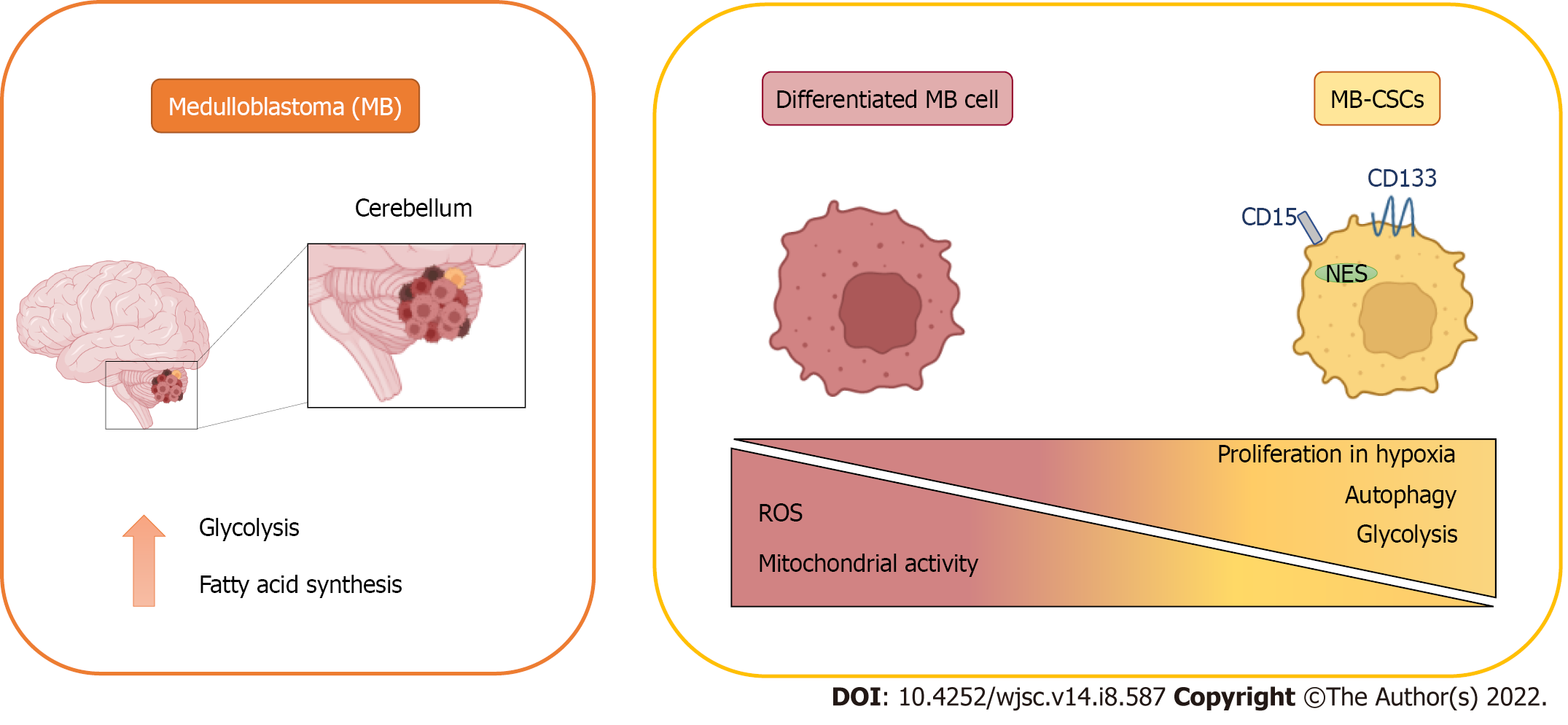Copyright
©The Author(s) 2022.
World J Stem Cells. Aug 26, 2022; 14(8): 587-598
Published online Aug 26, 2022. doi: 10.4252/wjsc.v14.i8.587
Published online Aug 26, 2022. doi: 10.4252/wjsc.v14.i8.587
Figure 1 Metabolic features of medulloblastoma and medulloblastoma cancer stem cells.
Medulloblastoma (MB) tumours show activation of metabolic pathways such as glycolysis and fatty acid synthesis. MB cancer stem cells (MB-CSCs) display several markers, including cluster of differentiation 133 (CD133), CD15, and nestin (NES). Increased autophagy and glycolysis have been detected in MB-CSCs compared to more differentiated cells. In addition, hypoxic conditions induce the expansion of MB-CSCs. On the other hand, MB-CSCs show decreased mitochondrial activity and reactive oxygen species. ROS: Reactive oxygen species.
Figure 2 Metabolic pathways upregulated in medulloblastoma.
Enzymes from glycolysis or fatty acid synthesis pathways upregulated in medulloblastoma (MB) tumours are highlighted in different colours indicating the MB subgroup (Sonic hedgehog [SHH]: Grey, WNT: Yellow, Group 3: Green, Group 4: Blue). Statistically significant prognostic genes are marked with the asterisk (*). GLUT4: Glucose transporter type 4; HK2: Hexokinase 2; PKM2: Pyruvate kinase M2; LDHA: Lactate dehydrogenase A; ACLY: ATP citrate lyase; FASN: Fatty acid synthase; SCD: Stearoyl-CoA desaturase; SHH: Sonic hedgehog.
- Citation: Martín-Rubio P, Espiau-Romera P, Royo-García A, Caja L, Sancho P. Metabolic determinants of stemness in medulloblastoma. World J Stem Cells 2022; 14(8): 587-598
- URL: https://www.wjgnet.com/1948-0210/full/v14/i8/587.htm
- DOI: https://dx.doi.org/10.4252/wjsc.v14.i8.587










